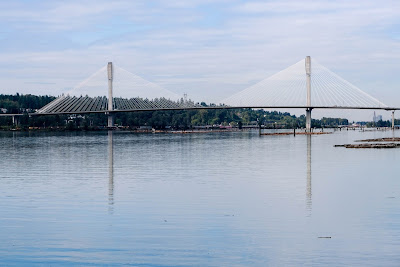Over the last few days, I’ve been posting about items that were covered at Monday night’s Langley City council meeting. I posted about the library system on Tuesday, and about water, sewer, and garbage services on Wednesday. Today, I will be covering the remaining items.
Even though winter is only a few weeks away, Langley City crews are still busy making improvements throughout our community. Council received an update from Rick Bomhof, Director of Engineering, Parks & Environment. The 200th Street Bridge upgrades over the Nicomekl River is compete. There is still some work which will be done in the new year between 50 Avenue and Grade Crescent, including installing a new traffic light at 50 Avenue and repaving.
Traffic calming is currently being implemented near Linwood Park and Conder Park, with speed tables now in place. If you are around Timms Community Centre, you will see that the sidewalks to the centre are being replaced with concrete sidewalks which will improve accessibility.
On the topic of accessibility, Langley City is also replacing pedestrian buttons at traffic lights. While a small change, these new buttons are more reliable.
 |
| An example of a new pedestrian signal button in Langley City. Select image to enlarge. |
Work is continuing along 56 Avenue, and it is expected to be wrapped up for the season in the next few weeks. Other projects on the go include the 48 Avenue sewer replacement, and culvert upgrades along Production Way and the Langley Bypass. Park improvements in progress include expanding the spray park at City Park, upgrading the sports fields at Rotary Park, and adding washrooms and a picnic shelter at Penzer Park.
Council also approved changes to our community grant policy, updating grants that are automatically given. The following outlines the changes:
- Six scholarships to graduating students who reside in the City of Langley will increase from $600 to $750 each.
- Support for the Youth Parliament will increase from a total of $600 to $1,000.
- A new $15,000 grant for the Langley Senior Resources Society to be used to subsidize the membership packages for low income seniors living in the City of Langley and for upgrades and maintenance to the facility.
I’m extremely pleased that council decided to provide stable and consistent operating funding for the Langley Senior Resources Society which provides critical social and recreational services for older people in our community. Langley City has supported the society for many years. The City contributed $40,000 per year towards the society’s mortgage since 1998, paying it off fully in 2014.
Langley City council also approved an update to our own remuneration. Currently, one third of council salary is tax-free. The federal government announced that starting in 2019, they will be making the salary of local government elected officials fully taxable.
To compensate for this change, the mayor’s remuneration will be changing from 85% of the median of other municipalities in our region to 100% over the next two years. Other council member’s remuneration will increase from 40% to 45% of the mayor’s remuneration. There will be a temporary 11% increase to the mayor’s remuneration in 2019 that will be evaluated in 2020 to see if it is still warranted based on remuneration in other Metro Vancouver municipalities. These changes will result in a $53,000 increase in the City’s budget for 2018 which is about 0.1% of the overall budget.
Council voted to extend the Crime Prevention Task Group’s mandate into 2018, and also voted to approve the 2018 regular council meeting dates.
Council also gave final reading, and approved the issuance of a development permit for a townhouse project located along 55A Avenue.









